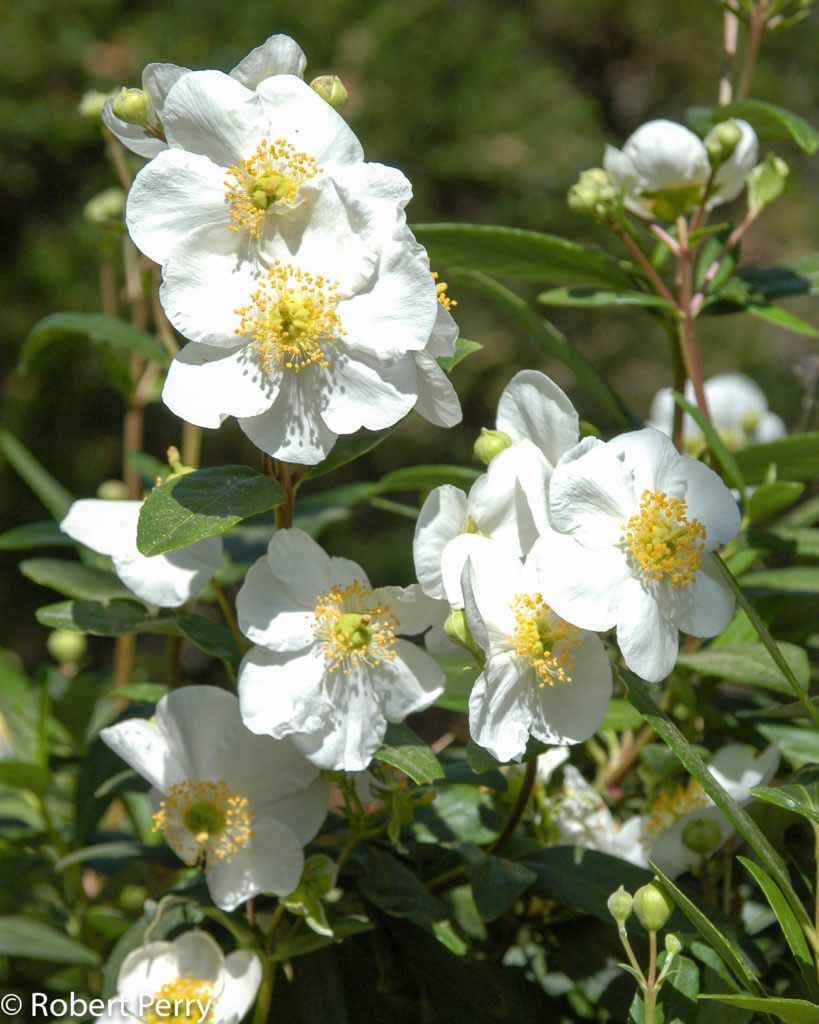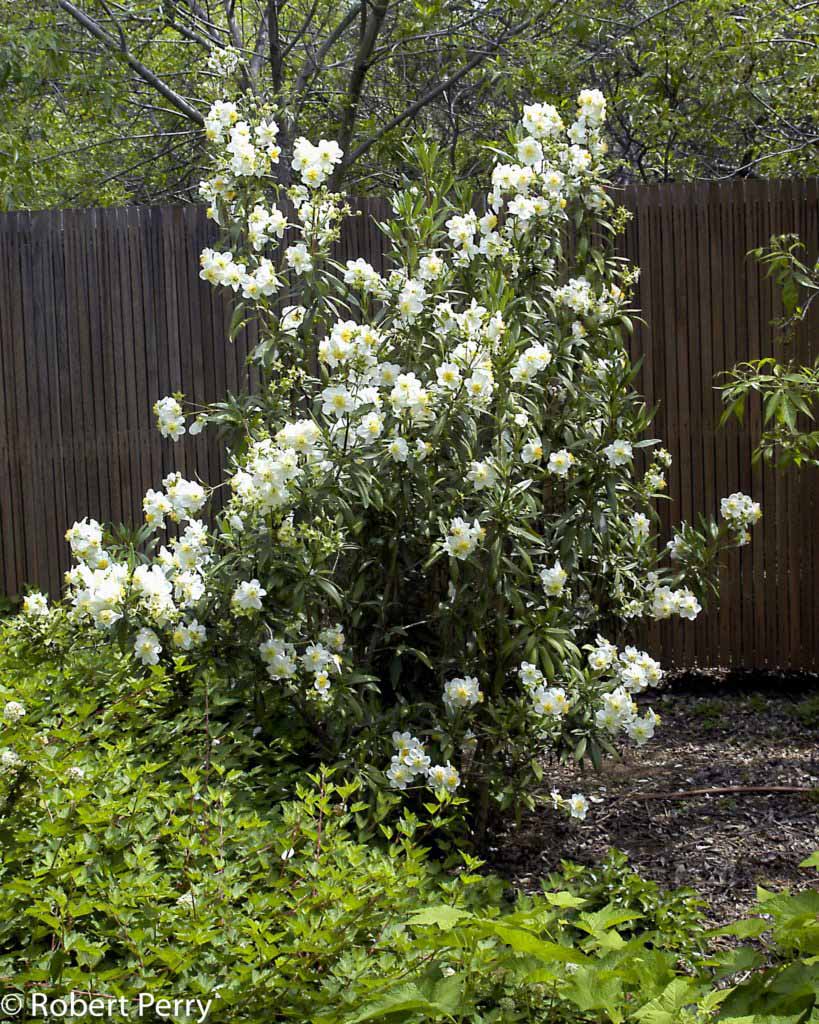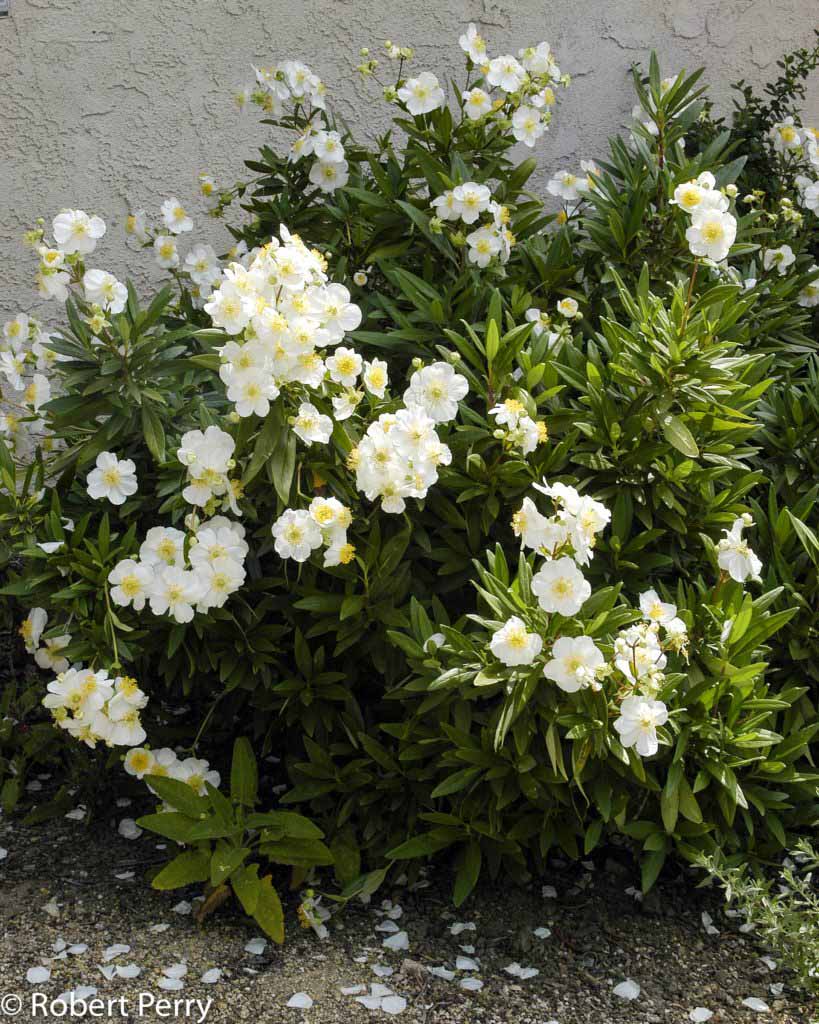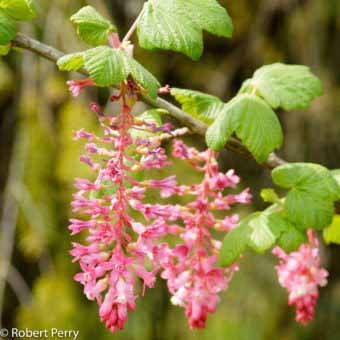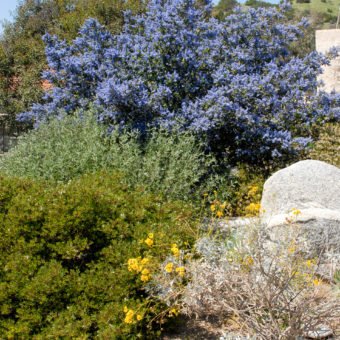The bush anemone grows well in the Inland Empire with normal winter rainfall and moderate amounts of summer water. The chart below provides a baseline irrigation schedule for this species. It should be noted there are several winter months marked by an asterisk (*) when rains can provide sufficient moisture and irrigation is not needed. The high and low range of moisture indicates it can grow with varying amounts of water; higher amounts of water within this range will result in stronger springtime flowering performance and summer foliage character.
| |
Jan* |
Feb* |
Mar* |
Apr |
May |
Jun |
Jul |
Aug |
Sep |
Oct |
Nov* |
Dec* |
| Runs per Month |
0x to 3x |
0x to 3x |
0x to 3x |
2x to 3x |
1x to 2x |
1x to 2x |
1x to 2x |
1x to 2x |
1x to 2x |
2x to 3x |
0x to 3x |
0x to 3x |
| Inches per Run |
1″ |
1″ |
1″ |
1″ |
1″ |
1″ |
1″ |
1″ |
1″ |
1″ |
1″ |
1″ |
| |
| Inches per Month |
0″ to 3″ |
0″ to 3″ |
0″ to 3″ |
2″ to 3″ |
1″ to 2″ |
1″ to 2″ |
1″ to 2″ |
1″ to 2″ |
1″ to 2″ |
2″ to 3″ |
0″ to 3″ |
0″ to 3″ |
Range of supplemental summer water: 9"-16"
Range of supplemental winter water: 0"-15"
| |
0″-3″ |
0″-3″ |
0″-3″ |
2″-3″ |
1″-2″ |
1″-2″ |
1″-2″ |
1″-2″ |
1″-2″ |
2″-3″ |
0″-3″ |
0″-3″ |
| |
Jan* |
Feb* |
Mar* |
Apr |
May |
Jun |
Jul |
Aug |
Sep |
Oct |
Nov* |
Dec* |
For more information on how to use this Irrigation Schedule and Graph, follow this link.
For information how to calculate your irrigation system’s schedule and precipitation rate, please follow this link.
For bushier growth, after flowering in late spring, pinch back branches behind the spent flowers (2). This plant can be tricky to grow in Southern California, especially inland. It will burn in too much sun, but not flower much in too much shade. If you want to try growing it, under tall deciduous trees, or on the north side of a building (especially if it will also get some western afternoon shade) may be the most suitable locations to try in inland gardens.
References